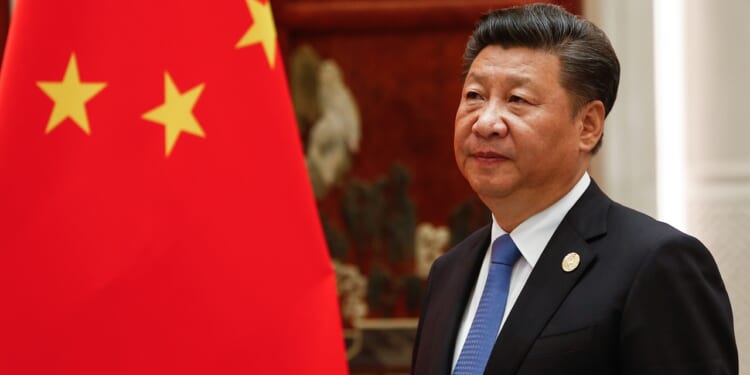By lighting—or pouring fuel on—geopolitical brush fires around the world, the Chinese have guaranteed the Americans will remain off-balance in Asia when the time comes to strike.
All eyes are currently fixed on the ongoing tensions between the United States, Israel, and Iran. On the periphery of that budding conflict, though, are two other important potential hotspots through which a major conflict might erupt. Those are the India-Pakistan rivalry, which is spiraling in the aftermath of a horrific terrorist attack, and the standoff between the United States, the Philippines, and the People’s Republic of China in the South China Sea (SCS).
And in both instances, Beijing is meddling at unprecedented levels.
Terrorism in Kashmir Might Lead to an India-Pakistan War
After a bloody jihadist terror attack in an area of Kashmir known as Pahalgam that left 26 Indian citizens dead, New Delhi responded with a five-point diplomatic plan to prevent similar acts of terrorism from recurring.
Indian leaders demanded that neighboring Pakistan, a fountainhead for terrorism on the subcontinent, conduct sweeping counterterrorism investigations to bring to justice the perpetrators—and those within Pakistan who may have supported them.
Predictably, Islamabad responded by arguing that “India’s attempts to link the Pahalgam attack with Pakistan are frivolous, devoid of rationality, and defeat logic.” The Pakistani government then added ominously, “Pakistan and its armed forces remain fully capable and prepared to defend its sovereignty and territorial integrity.”
India replied by suspending the Indus Waters Treaty (IWT), cutting off Pakistan’s access to the vital water flows of the Indus River—and perhaps laying the groundwork for another war.
The Indus Waters Treaty of 1960—Gone but Not Forgotten?
Signed on September 16, 1960 after nine years of hard negotiations between recalcitrant enemies in Pakistan and India, the IWT has 12 articles and eight annexures.
One of the key provisions in the IWT is that India would make available for “unrestricted use” by Pakistan the waters of the Indus, Jhelum, and Chenab rivers of the west. Prior to its abrogation, the treaty had survived 40 years of tensions between Pakistan and India.
However, Pakistan has an ace card to play: its strong alliance with China, which controls access to multiple rivers flowing into India. There are fears in the region that, in response to India’s suspension of the IWT, China could threaten India with cutting off water access to some of the rivers under Chinese control going into India, such as the Galwan River.
Indeed, a hidden undercurrent (no pun intended) of the 2020 border clashes between India and China was over control of water rights along the Tibetan Plateau.
Terrorism, water wars, and border clashes are now risking a very real war between nuclear-armed Pakistan and nuclear-armed India—with neighboring China potentially in a position to exploit the instability for their own gain.
The Contest for Control Over the Luzon Strait
To the east of this conflict, in which China may or may not be exerting malign influence, is the Luzon Strait between the Philippines and Taiwan. The United States Marine Corps is deploying its new NMESIS (Navy-Marine Expeditionary Ship Interdiction System) anti-ship missile platform to overlook that vitally important strait. The idea is to deter China’s People’s Liberation Army Navy (PLAN) from destabilizing the South China Sea—specifically to stop China from threatening their neighbors in the Philippines, as it has been doing for years.
The Strait of Luzon is a narrow waterway separating the southernmost tip of Taiwan from the northern Philippines. For China’s encirclement strategy of democratic Taiwan to work, Beijing needs control over the Luzon Strait. The US-made NMESIS platform threatens to choke up the Luzon Strait, at least for a period of time.
And during that time, if Beijing opted to conduct sweeping attacks on Taiwan, not having access to the Luzon Strait could seriously hamper the PLAN’s forthcoming blockade and/or assault on Taiwan.
As the Marines were installing the NMESIS platform, they encountered a unique sight: the PLAN’s Shandong aircraft carrier task group transiting through the narrow waterways. China’s flotilla passed within the range of NMESIS and took up station just east of the Philippines once they successfully passed through the strait. It was a clear message to Washington from Beijing: we will not be deterred.
China Is Lighting the Biggest Fire the World Has Ever Seen
The Shandong’s transit through the Luzon Strait amounted to a reminder from Chinese President Xi Jinping to U.S. President Donald Trump that the Chinese retain the real advantages in the region, not the United States—which is weaker militarily than it has been in decades. The American military power that remains, though mighty, is stretched to its limits, whereas China’s is concentrated in one region.
Consider this: beyond the NMESIS platform, the Americans have only one aircraft carrier, the USS Nimitz—the namesake of its class, and thus also the oldest—loitering around the Pacific. The bulk of the U.S. Navy’s fleet is mired in the Middle East.
Everywhere one looks today, the world is on fire. The Ukraine War is potentially one misstep away from drawing in the great powers. The Iran crisis threatens to do the same. Now the Indian subcontinent is aflame.
These conflicts have all sapped America’s strength, drawing the attention of U.S. troops and U.S. diplomats away from the vital Indo-Pacific theater. This is almost certainly by design on Beijing’s part. By lighting—or pouring fuel on—geopolitical brush fires around the world, the Chinese have guaranteed the Americans will remain off-balance in Asia when the time comes to strike.
About the Author: Brandon J. Weichert
Brandon J. Weichert, a Senior National Security Editor at The National Interest as well as a contributor at Popular Mechanics, who consults regularly with various government institutions and private organizations on geopolitical issues. Weichert’s writings have appeared in multiple publications, including the Washington Times, National Review, The American Spectator, MSN, the Asia Times, and countless others. His books include Winning Space: How America Remains a Superpower, Biohacked: China’s Race to Control Life, and The Shadow War: Iran’s Quest for Supremacy. His newest book, A Disaster of Our Own Making: How the West Lost Ukraine is available for purchase wherever books are sold. He can be followed via Twitter @WeTheBrandon.
Image: Shutterstock / Gil Corzo.















